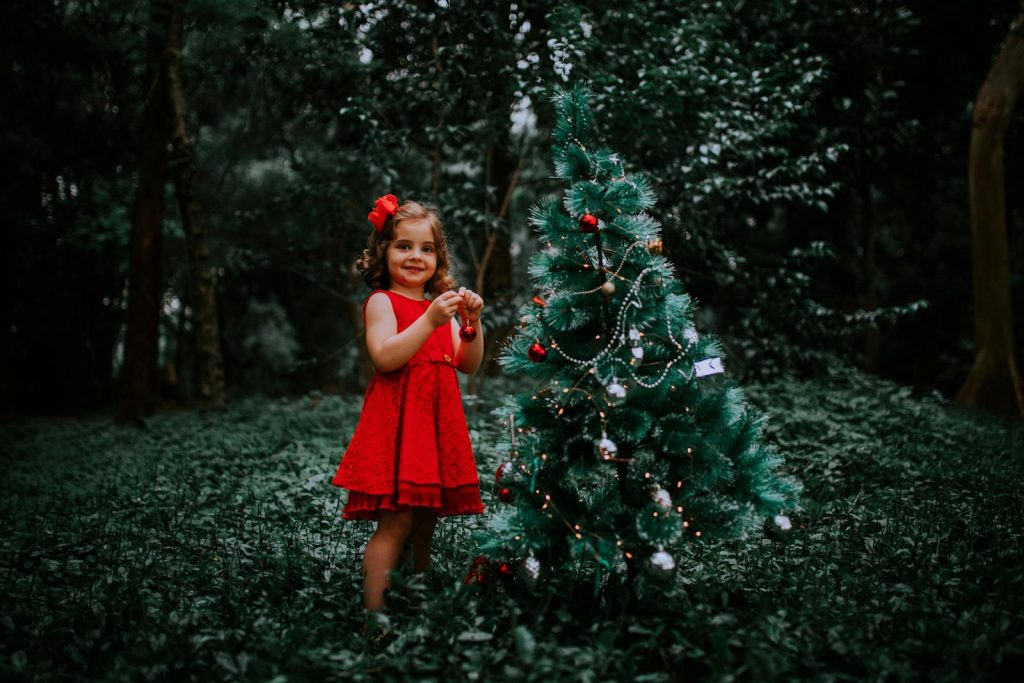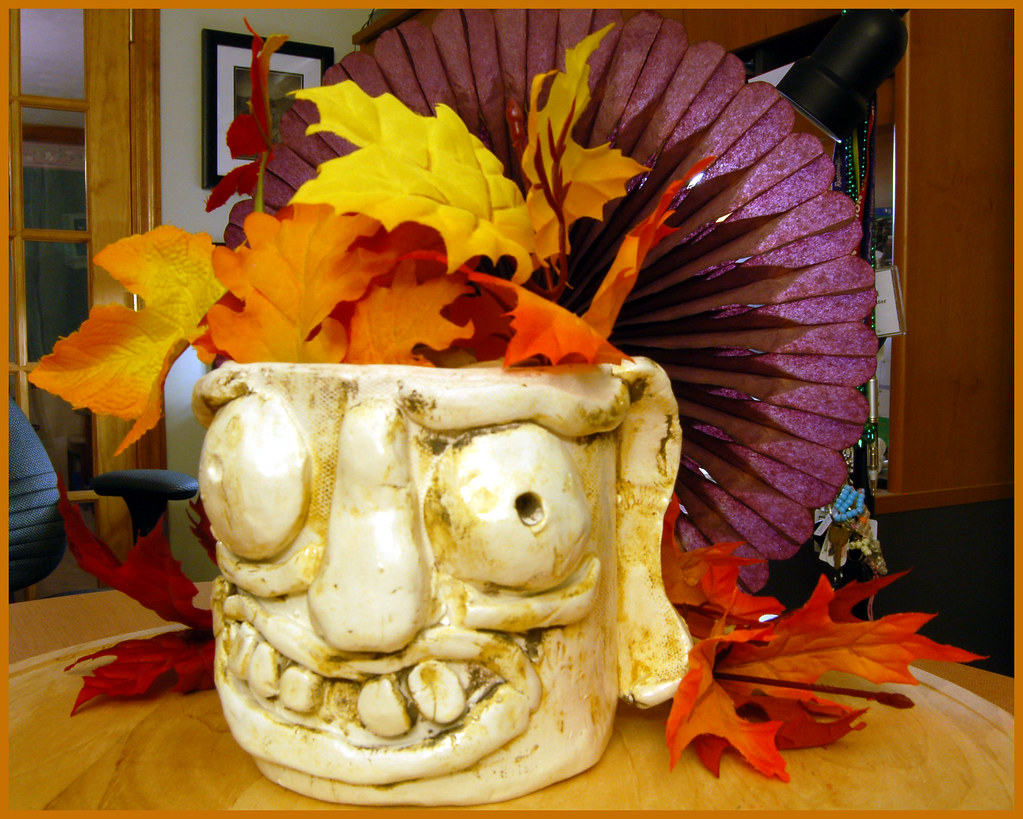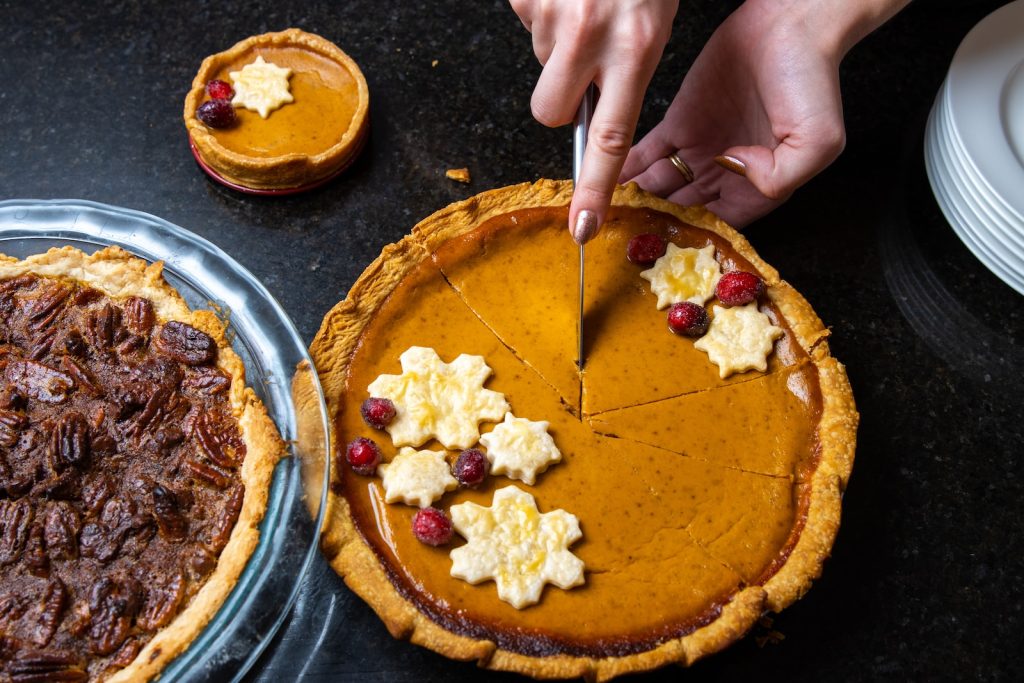As the holiday season approaches, many families are faced with the annual decision of whether to purchase a real or artificial Christmas tree. While both options have their pros and cons, trends in recent years have shown a shift towards one over the other.

According to a survey conducted by the National Christmas Tree Association, artificial trees have been increasing in popularity over the past decade. In 2020, 81% of households that put up a Christmas tree reported using an artificial tree, compared to 19% who opted for a real tree. This marks a significant shift from 2004, when the numbers were nearly equal at 51% artificial and 49% real.
There are several factors that may contribute to this trend. One is the convenience and cost-effectiveness of artificial trees, which can be reused for several years and do not require the ongoing expense of purchasing a new tree each season. Additionally, concerns about environmental impact and sustainability have led some consumers to choose artificial trees made from recycled materials over real trees that are cut down each year. However, others argue that real trees are a more eco-friendly choice as they are a renewable resource and can be recycled or composted after use.
Historical Trends in Christmas Tree Preferences

Cultural Traditions and Christmas Trees
The tradition of bringing evergreen trees indoors and decorating them with ornaments and lights during the winter season dates back to the 16th century in Germany. It became popular in the United States in the 19th century, and since then, it has become an integral part of American Christmas celebrations.
Initially, real Christmas trees were the only option available to consumers. However, with the introduction of artificial Christmas trees in the 1930s, people started to embrace the convenience and cost-effectiveness that came with using them.
Evolving Consumer Choices
Over the years, consumer preferences have continued to evolve, with many people opting for artificial trees due to their durability, affordability, and convenience. According to a survey by the National Christmas Tree Association, about 77% of American households that display Christmas trees use artificial trees, while 23% prefer real trees.
One factor that has contributed to the growing popularity of artificial trees is their ability to mimic the look of real trees without the hassle of maintenance and clean-up. Artificial trees also come in a wide range of shapes and sizes, making it easier for consumers to find the perfect fit for their homes.
Despite the convenience of artificial trees, some consumers still prefer the traditional look and feel of real trees. Real trees are often seen as a more environmentally-friendly option, as they are biodegradable and can be recycled. Additionally, the scent of a real tree can add to the festive atmosphere of the holiday season.
Overall, while artificial trees have gained popularity over the years, both real and artificial trees remain popular choices for consumers during the holiday season.
Comparative Analysis of Artificial and Real Christmas Trees
Aesthetic and Practical Considerations
When it comes to choosing between artificial and real Christmas trees, one of the most important considerations is aesthetics. Artificial trees are available in a variety of colors, shapes, and sizes, and can be customized to fit any decor. Real trees, on the other hand, have a natural beauty that cannot be replicated by artificial trees. They come in different species, such as Douglas fir, Fraser fir, and Noble fir, each with their unique texture, scent, and color.
Another practical consideration is the height of the tree. Artificial trees are usually available in standard sizes, while real trees can be cut to any height. However, taller trees require more space and may not be practical for smaller homes or apartments.
Maintenance and Convenience Factors
Maintenance is another factor to consider when choosing between artificial and real Christmas trees. Artificial trees require little maintenance, as they do not shed needles and do not need watering. They can be easily assembled and disassembled, making them convenient for storage. Real trees, however, require regular watering to keep them fresh, and they shed needles as they dry out. They can also be messy to clean up after the holiday season.
In terms of convenience, artificial trees are a good option for those who want a hassle-free setup and cleanup. They can be used year after year and do not require any special care. Real trees, on the other hand, require more effort and attention, but many people enjoy the tradition of selecting and cutting down their own tree.
Cost Implications Over Time
Cost is another important factor to consider when choosing between artificial and real Christmas trees. Artificial trees are generally more expensive upfront, but they can last for many years with proper care. Real trees, on the other hand, are less expensive upfront, but they need to be replaced every year and can add up over time.
In the long run, the cost of owning an artificial tree can be less than that of a real tree, especially if the tree is used for several years. However, the cost of a real tree can be offset by the benefits of having a fresh, natural tree in the home.
Overall, the choice between artificial and real Christmas trees depends on personal preference and practical considerations. While artificial trees are convenient and low-maintenance, real trees have a natural beauty and traditional charm that cannot be replicated.
Environmental Impact and Sustainability
When it comes to environmental impact and sustainability, both real and artificial Christmas trees have their pros and cons. In this section, we will take a closer look at the material and production footprint, biodegradability and end-of-life disposal, as well as the carbon footprint and reforestation efforts of both types of trees.
Material and Production Footprint
Artificial Christmas trees are typically made from PVC plastic, a non-biodegradable material that is derived from fossil fuels. The production of PVC plastic is a resource-intensive process that generates greenhouse gases and toxic byproducts. On the other hand, real Christmas trees are grown on tree farms and are a renewable resource. However, the production of real Christmas trees requires water, fertilizers, and pesticides, which can have negative impacts on the environment.
Biodegradability and End-of-Life Disposal
At the end of their useful life, artificial Christmas trees are not biodegradable and cannot be recycled. They often end up in landfills, where they can take hundreds of years to decompose. Real Christmas trees, on the other hand, are biodegradable and can be recycled or used for mulch or compost. This makes them a more sustainable option for those who are concerned about end-of-life disposal.
Carbon Footprint and Reforestation Efforts
Artificial Christmas trees have a larger carbon footprint than real Christmas trees. According to the Carbon Trust, a 6.5ft artificial tree is responsible for about 40kg of greenhouse gas emissions, which is equivalent to driving a car for 10 miles. In contrast, real Christmas trees absorb carbon dioxide from the atmosphere as they grow, making them a carbon-neutral option. Additionally, many Christmas tree farms engage in reforestation efforts, planting new trees to replace those that are harvested.
Overall, both real and artificial Christmas trees have their environmental impacts and sustainability concerns. However, considering the material and production footprint, biodegradability and end-of-life disposal, as well as the carbon footprint and reforestation efforts, real Christmas trees are a more sustainable option for those who are concerned about the environment.
Consumer Safety and Health Considerations
When it comes to choosing between an artificial or real Christmas tree, there are a few safety and health considerations that consumers should take into account before making a decision.
Fire Hazards and Prevention
One of the most significant concerns with real Christmas trees is the risk of fire. According to the National Fire Protection Association, Christmas trees account for an average of 160 home fires each year, resulting in an average of three deaths, 15 injuries, and $10 million in property damage.
To minimize the risk of fire, consumers should ensure their real Christmas tree is fresh, well-watered, and kept away from heat sources such as fireplaces, candles, and heaters. They should also check the lights for any frayed wires or broken bulbs and turn them off when leaving the house or going to bed.
Artificial trees are generally considered safer in terms of fire hazards because they are made of non-flammable materials and do not dry out like real trees. However, it is still essential to check the lights and ensure they are UL-listed for safety.
Allergies and Health Risks
Real Christmas trees can also pose a risk to individuals with allergies or respiratory issues. The tree’s needles and sap can trigger allergic reactions or aggravate asthma symptoms. Additionally, real trees can harbor mold spores, which can cause respiratory problems.
Consumers with allergies or respiratory issues may want to consider an artificial tree as a safer option. However, it is essential to note that some artificial trees may contain chemicals that can emit volatile organic compounds (VOCs) and cause respiratory irritation. Consumers should look for artificial trees that are labeled as non-toxic and low-VOC.
In terms of pets, both real and artificial trees can pose risks. Real trees can be toxic to pets if ingested, and the needles can cause injury if stepped on or ingested. Artificial trees can also be dangerous if pets chew on the wires or ingest the plastic needles. It is essential to keep pets away from the tree and ensure it is securely anchored to prevent tipping.
Overall, consumers should carefully consider the safety and health implications of both real and artificial Christmas trees before making a decision.
Market Trends and Industry Insights
Leading Brands and Market Share
The Christmas tree industry has been experiencing a shift in recent years, with artificial trees becoming increasingly popular. According to a report by Statista, the market size of artificial Christmas trees in the United States was valued at $1.3 billion in 2020 and is expected to grow at a rate of 4.5% annually from 2021 to 2028.
Some of the leading brands in the artificial Christmas tree market include Balsam Hill, National Tree Company, and Puleo International. These companies offer a wide range of options, from traditional trees to more modern designs. Balsam Hill, in particular, is known for its realistic and high-quality trees, while National Tree Company offers a variety of pre-lit trees in different styles and sizes. Puleo International is also a popular choice, offering a range of trees at affordable prices.
On the other hand, the real Christmas tree market is still holding strong. According to the National Christmas Tree Association, in 2020, 21.6 million real Christmas trees were sold in the United States, compared to 13.3 million artificial trees. The most popular species of real trees are the Fraser fir, Douglas fir, and balsam fir.
Technological Advancements in Tree Design
One reason for the growing popularity of artificial trees is the technological advancements in tree design. Best Artificial Christmas Trees explains that modern artificial trees are made with high-quality materials and are designed to look more realistic than ever before. For example, the Downswept Douglas Fir is a popular option that features a more natural-looking shape and realistic needles.
In addition to realistic design, pre-lit trees are also becoming more popular. These trees come with built-in lights, eliminating the need for separate strings of lights. Some pre-lit trees even come with remote controls, allowing users to easily switch between different lighting modes.
Overall, while the real Christmas tree market is still strong, the artificial tree market is growing steadily. With advancements in design and technology, artificial trees are becoming more realistic and convenient than ever before.
Consumer Preferences and Lifestyle Alignment
When it comes to choosing between an artificial or real Christmas tree, consumer preferences and lifestyle alignment play a significant role. Here are some factors to consider:
Personal Aesthetics and Tree Customization
Personal aesthetics and tree customization are essential factors that influence the choice between an artificial or real Christmas tree. Some people prefer the natural look of a real tree, while others prefer the uniformity and perfect shape of an artificial tree. Real trees come in various shapes and sizes, and their unique imperfections make them feel more authentic. On the other hand, artificial trees can be customized to fit any space, and they come in a variety of shapes, colors, and designs.
Lifestyle and Space Considerations
Lifestyle and space considerations are also significant factors that impact the decision between an artificial or real Christmas tree. For example, if someone lives in a small apartment or has limited storage space, an artificial tree may be a better choice because it can be easily disassembled and stored in a compact box. Additionally, if someone moves frequently or has an office, an artificial tree may be more practical because it can be transported easily and does not require watering or maintenance.
When it comes to ornaments, both artificial and real trees can accommodate a wide variety of decorations. However, if someone has a preference for certain types of ornaments, they may want to choose a tree that can support their weight and size. Shape is another factor that may influence the choice between an artificial or real tree. If someone wants a specific shape or style, an artificial tree may be the better option because it can be easily molded to fit their preferences.
In conclusion, the choice between an artificial or real Christmas tree ultimately depends on personal preference and lifestyle considerations. While real trees may be more authentic and have a natural look, artificial trees are more customizable and practical for those with limited space or frequent moves.
Conclusion
The Christmas tree debate between artificial and real trees is still ongoing. While both have their pros and cons, it seems that the trend is shifting towards artificial trees.
One of the reasons for this shift is the convenience of having a faux Christmas tree. Artificial trees do not require watering or maintenance, and they can be reused year after year. Additionally, they do not shed needles or create a mess, making them a cleaner option for households with pets or young children.
Another reason for the rise in popularity of artificial trees is the increasing quality of their design. Best artificial Christmas trees now come with realistic-looking needles and branches, making them almost indistinguishable from real trees. Some even come with built-in lighting and natural scents to enhance the authentic feel.
However, it is important to note that real trees still have their benefits. They provide a natural scent and can be a more authentic option for those who prefer the traditional feel of a real tree. Additionally, purchasing a real tree supports local tree farmers and helps maintain healthy forests for generations to come.
In the end, the decision between a real or faux Christmas tree comes down to personal preference and lifestyle. While artificial trees may be more convenient and realistic-looking, real trees provide a natural scent and support local farmers. Ultimately, the choice is up to the individual and their specific needs. And yes, artificial trees are trending very slightly higher than real trees.
Judy Temkin
Judy Temkin: The Trendsetting Force Behind TrendingDirt.com
Judy Temkin, the visionary creator of TrendingDirt.com, has a lifelong passion for identifying and understanding the ebbs and flows of lifestyle trends. Born in an era of magazine-influenced styles, Judy's curiosity always centered around understanding the forces that bring certain trends to the forefront.
Her unique approach isn't rooted in formal journalistic training; it's a blend of innate curiosity and a talent for spotting societal shifts. Judy's mission was clear: create a platform that anticipated, rather than just reported on, the next big thing. This led to the birth of TrendingDirt.com, a digital hub that doesn't just cover trends but often sets them.
TrendingDirt isn't just another blog. It’s a testament to Judy's dedication to delve deeper into the mechanics of trends, understanding their origins, and predicting their trajectories. Judy ensures her platform remains lively, informative, and always one step ahead in the fast-paced world of trending lifestyle news and tips.
In essence, Judy Temkin isn't just a spectator of today's lifestyle; she's a key player. With every article on TrendingDirt.com, she guarantees her readers a firsthand look into the ever-evolving world of trends.
Stay updated, stay trendy with Judy and TrendingDirt.com.



